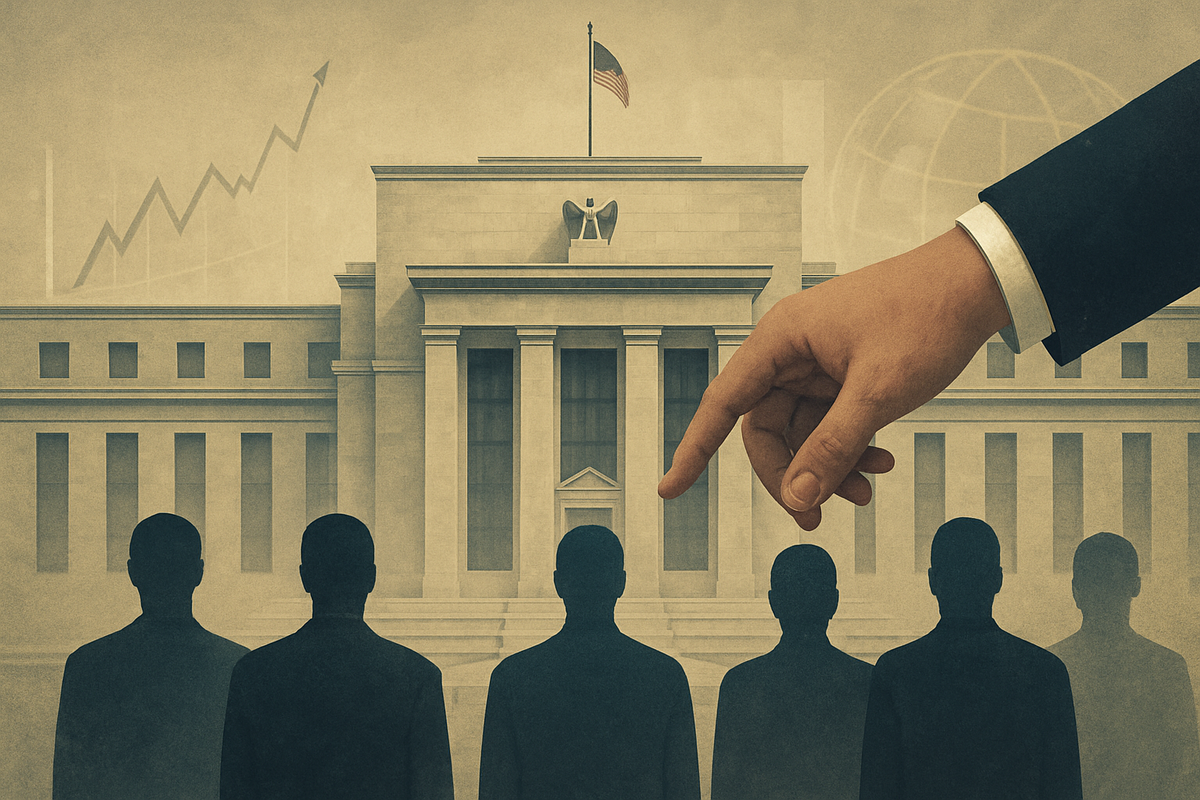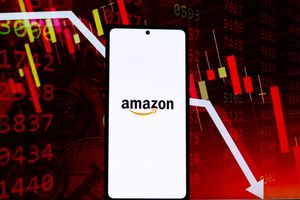
As the calendar turns to late 2025, the White House is deep into the process of selecting the next Chair of the Federal Reserve, a decision poised to reshape U.S. monetary policy and global financial markets. With current Chair Jerome Powell's term set to conclude in May 2026, President Trump's administration is actively interviewing a pool of candidates, signaling a potentially significant shift in the leadership of the world's most influential central bank. This appointment carries immense weight, as the Fed Chair's decisions on interest rates and economic management directly impact everything from inflation and employment to borrowing costs for businesses and consumers across the nation.
The stakes are exceptionally high, as the incoming Chair will inherit the responsibility of navigating an evolving economic landscape, balancing the Fed's dual mandate of achieving maximum employment and stable prices. The immediate implications of this selection are profound, with financial markets already keenly observing the process for clues about future monetary policy direction. A new leader could usher in a different philosophy on inflation targeting, interest rate adjustments, and the overall approach to economic stewardship, potentially triggering shifts in market sentiment and investment strategies.
The Succession Race: White House Narrows Down Fed Chair Candidates
The meticulous process to identify the next Federal Reserve Chair commenced in the fall of 2025, with Treasury Secretary Scott Bessent taking the lead in an initial round of interviews. This extensive search aims to find a successor for Jerome Powell, whose second term as Chair concludes on May 15, 2026, though his tenure as a Governor extends until January 2028. President Trump has publicly indicated that he does not intend to reappoint Powell for a third term, setting the stage for a new face at the helm of the U.S. central bank.
By October 2025, the initial list of 11 potential candidates was reportedly whittled down to a formidable shortlist of five finalists. These include familiar figures within the Federal Reserve system and prominent voices in the financial world: Michelle Bowman, current Federal Reserve Governor and Vice Chair for Supervision; Christopher Waller, also a current Federal Reserve Governor; Kevin Warsh, a former Federal Reserve Governor; Kevin Hassett, former Chairman of the White House Council of Economic Advisers; and Rick Rieder, Global Chief Investment Officer of Fixed Income at BlackRock (NYSE: BLK). A final round of interviews involving Secretary Bessent and senior White House officials is expected to wrap up shortly after Thanksgiving 2025, with a potential nomination for a Federal Reserve Governor position, which could later be elevated to Chair, possibly as early as December 2025 or January 2026.
The market's initial reactions to the evolving list of candidates have been nuanced, with investors and analysts scrutinizing each name for clues about their potential monetary policy leanings. Candidates perceived as more "hawkish" – favoring tighter monetary policy and higher interest rates to combat inflation – could lead to increased volatility in bond markets and a strengthening dollar. Conversely, a "dovish" appointment – someone inclined towards lower rates to stimulate employment – might be seen as favorable for equity markets. The ongoing uncertainty surrounding the appointment has contributed to a cautious stance among some investors, as the future trajectory of interest rates remains a primary concern for asset valuations.
Corporate Fortunes Hang in the Balance: Winners and Losers from a New Fed Era
The appointment of a new Federal Reserve Chair is not merely a political event; it's a pivotal moment that can significantly alter the financial fortunes of public companies across various sectors. The incoming Chair's approach to monetary policy, particularly regarding interest rates, will create distinct winners and losers in the market. Companies that are highly sensitive to borrowing costs and consumer spending will feel the immediate effects of any shift in the Fed's stance.
Should the new Chair adopt a more "hawkish" posture, prioritizing inflation control through higher interest rates, sectors heavily reliant on debt financing or consumer discretionary spending could face headwinds. For instance, housing and real estate companies like Lennar Corporation (NYSE: LEN) or D.R. Horton (NYSE: DHI) might see demand cool as mortgage rates rise, impacting sales and profitability. Similarly, growth-oriented technology companies such as NVIDIA Corporation (NASDAQ: NVDA) or Tesla, Inc. (NASDAQ: TSLA), which often rely on readily available and cheaper capital for expansion, could experience higher borrowing costs, potentially slowing innovation and investment. Banks, however, might benefit from a hawkish stance, as higher interest rates typically translate to wider net interest margins, boosting profitability for institutions like JPMorgan Chase & Co. (NYSE: JPM) and Bank of America (NYSE: BAC).
Conversely, a more "dovish" Chair, inclined to maintain lower interest rates to stimulate economic growth and employment, would likely create a different set of market dynamics. In such a scenario, companies with significant debt loads or those in capital-intensive industries could see their financing costs decrease, improving their bottom lines. This might include utilities, telecommunications companies, and certain manufacturing firms. Lower rates would also generally be favorable for consumer discretionary companies like Amazon.com, Inc. (NASDAQ: AMZN) or Nike, Inc. (NYSE: NKE), as consumers would have more disposable income and cheaper credit, encouraging spending. Furthermore, emerging market economies and companies could benefit from a weaker dollar, making their exports more competitive and reducing the burden of dollar-denominated debt. The perception of the new Chair's leanings will therefore be a critical factor for investors in positioning their portfolios.
Broader Implications: Navigating Economic Currents and Historical Precedents
The selection of a new Federal Reserve Chair extends far beyond the immediate impact on interest rates and corporate balance sheets; it is a decision with profound wider significance, shaping the trajectory of the U.S. and global economies for years to come. This appointment will either reinforce or challenge existing monetary policy frameworks, influencing how the Fed responds to future economic shocks, inflationary pressures, or periods of subdued growth. The new Chair's philosophy will be particularly crucial in the context of ongoing debates about the Fed's role in addressing issues like climate change, financial stability, and income inequality, potentially fitting into broader industry trends towards more socially conscious or interventionist central banking.
The ripple effects of this leadership change will be felt across a spectrum of stakeholders, from international trading partners to domestic competitors. A shift in U.S. monetary policy can influence global capital flows, currency valuations, and commodity prices, directly affecting the economic stability of nations heavily reliant on trade with or investment from the United States. For instance, a stronger dollar, potentially resulting from a more hawkish Fed, could make U.S. exports more expensive, impacting companies like Boeing (NYSE: BA) and their international sales. Conversely, it could make imports cheaper, benefiting retailers. Regulatory or policy implications are also significant, as the Fed Chair plays a key role in banking supervision. A new Chair might bring a different approach to financial regulation, potentially easing or tightening requirements for major financial institutions and influencing credit availability for businesses and households.
Historically, changes in Fed leadership have often marked turning points in economic policy. For example, Paul Volcker's appointment in 1979 ushered in an era of aggressive interest rate hikes to combat rampant inflation, fundamentally reshaping the economic landscape. More recently, Jerome Powell's tenure has been characterized by a proactive response to the COVID-19 pandemic and a subsequent battle against elevated inflation. The current situation draws parallels to past transitions where the incoming Chair faced significant economic challenges, underscoring the importance of a leader with a clear vision and the ability to build consensus within the Federal Open Market Committee (FOMC). The chosen candidate's ability to navigate political pressures while maintaining the Fed's independence will be paramount, as the credibility of the institution is essential for market confidence and effective policy implementation.
The Road Ahead: Anticipating Future Scenarios and Market Shifts
The immediate aftermath of the Federal Reserve Chair nomination and confirmation will undoubtedly bring both short-term adjustments and long-term strategic considerations for businesses and investors. In the short term, markets will react swiftly to the announcement, with bond yields, equity valuations, and currency exchange rates likely experiencing volatility as traders digest the implications of the new leader's perceived policy stance. Companies will need to quickly assess how the incoming Chair's approach to interest rates and economic management might affect their cost of capital, consumer demand, and overall business environment.
Looking further ahead, the long-term possibilities depend heavily on the new Chair's ability to steer the economy through potential challenges such as persistent inflation, geopolitical instability, or an economic slowdown. Potential strategic pivots for businesses might include re-evaluating investment plans, adjusting debt structures, or recalibrating growth strategies based on the anticipated monetary policy regime. For instance, if a more inflation-averse Chair is appointed, companies might prioritize cost control and efficiency, while a growth-oriented Chair could encourage greater capital expenditure. Market opportunities could emerge in sectors that are set to benefit from the new policy direction, such as financials during periods of rising rates or technology during periods of sustained low rates. Conversely, challenges could arise for highly leveraged companies or those in sectors sensitive to shifts in consumer spending.
Several potential scenarios and outcomes could unfold. One scenario involves a relatively smooth transition, with the new Chair largely continuing the current policy trajectory with minor adjustments, leading to minimal market disruption. Another scenario could see a more significant shift, with the new Chair implementing a distinctly different monetary policy, potentially leading to a period of market re-pricing and economic re-calibration. Investors should closely monitor the nominee's past statements, economic philosophy, and the composition of the Federal Open Market Committee to anticipate these shifts. The ability of the new Chair to build consensus within the FOMC will also be crucial, as effective monetary policy relies on a unified approach.
Wrap-Up: A New Era for the Federal Reserve and the Economy
The White House's ongoing process of interviewing candidates for the next Federal Reserve Chair marks a critical juncture for the U.S. economy and global financial markets. The selection of the individual who will lead the world's most powerful central bank carries immense weight, promising to define the trajectory of monetary policy for years to come. Key takeaways from this event underscore the profound influence of the Fed Chair on interest rates, inflation, employment, and the overall health of the financial system. The current discussion around potential candidates highlights the diverse philosophies that could shape future economic management, from those prioritizing aggressive inflation control to those favoring sustained economic growth.
Moving forward, the market will be keenly assessing the nominee's economic leanings, communication style, and ability to command consensus within the Federal Open Market Committee. Investors should prepare for potential volatility and strategic adjustments across various sectors, as different monetary policy stances will undoubtedly create distinct winners and losers. Financial institutions, technology firms, real estate developers, and consumer discretionary companies are among those most susceptible to shifts in interest rate policy. The ultimate impact will depend not only on the individual chosen but also on their capacity to navigate complex economic challenges while preserving the Fed's crucial independence.
In the coming months, investors should closely watch for the official nomination, the Senate confirmation hearings, and the nominee's initial public statements. These events will provide invaluable insights into the future direction of U.S. monetary policy and offer clues for portfolio positioning. The transition of leadership at the Federal Reserve is more than a change of guard; it is a defining moment that will shape the economic landscape, influence corporate strategies, and impact the financial well-being of millions, making it an event of paramount significance for all market participants.
This content is intended for informational purposes only and is not financial advice





